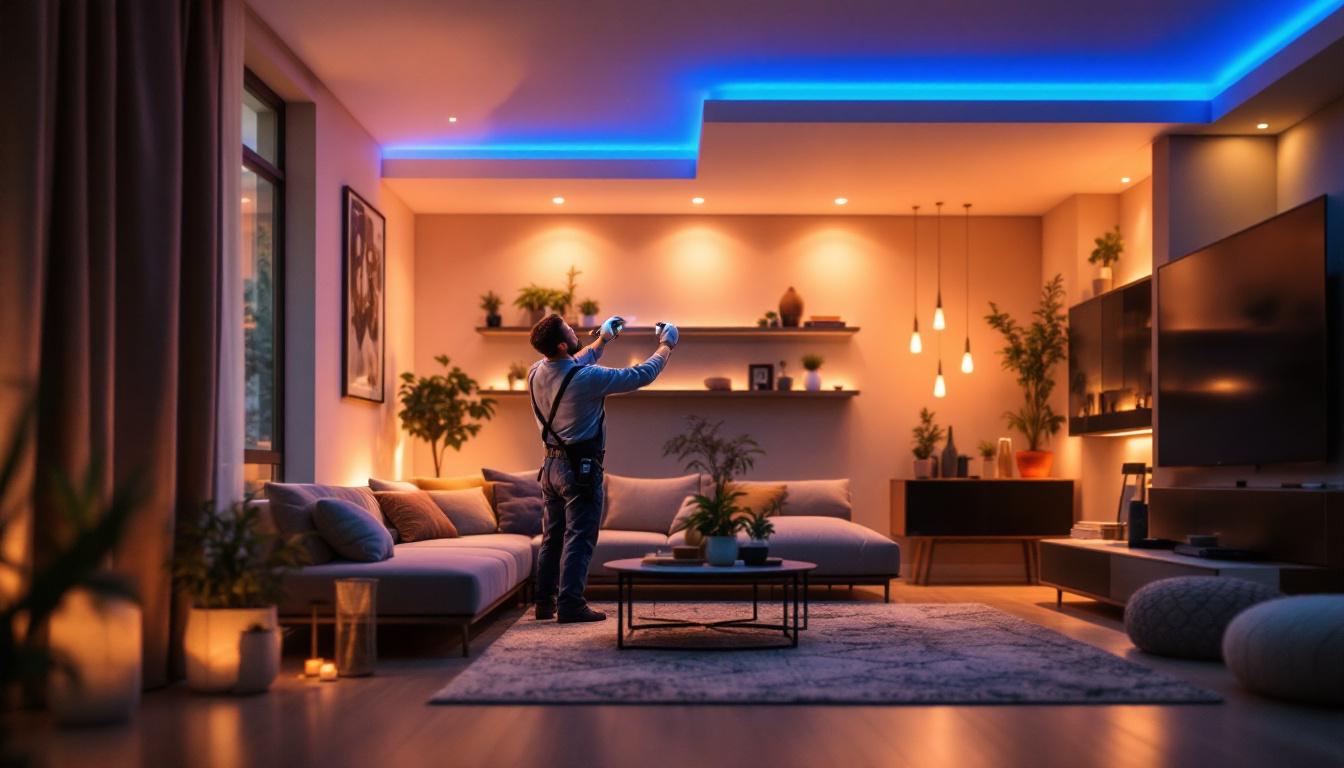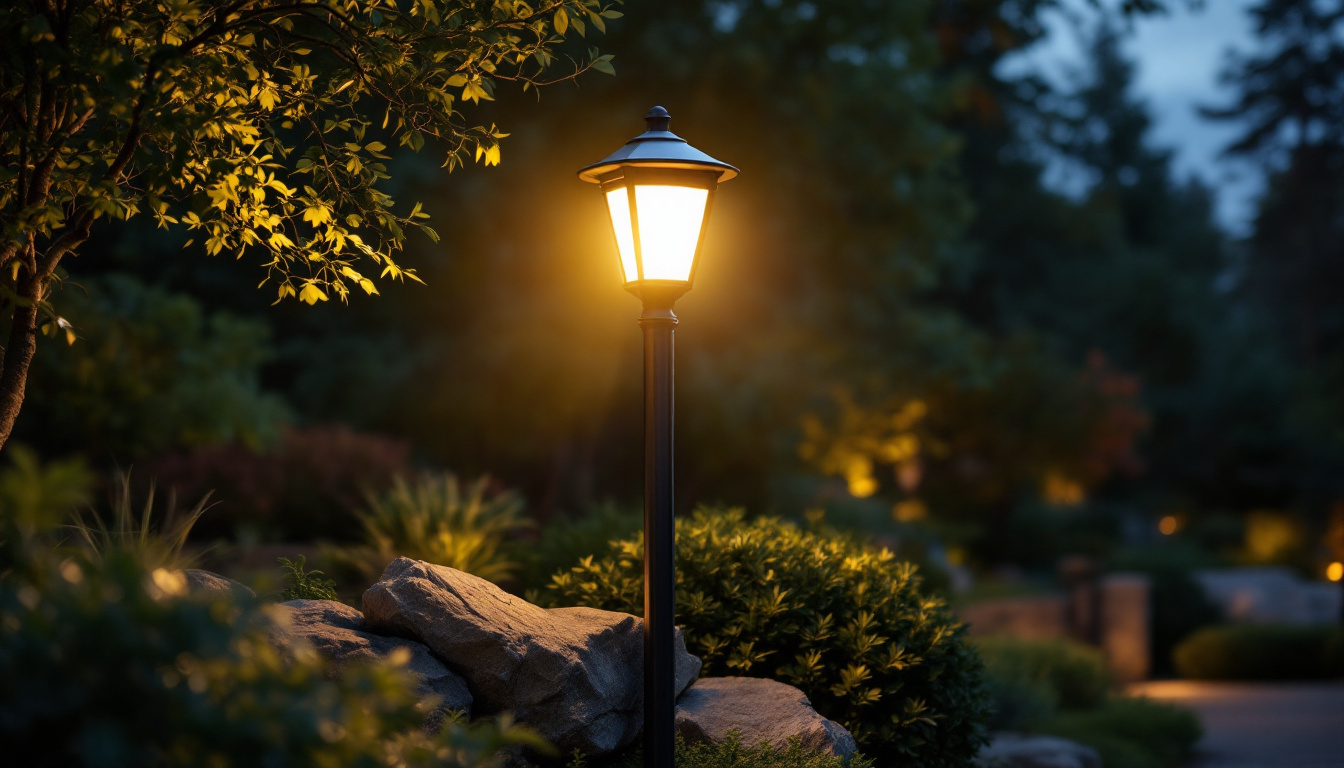
As the demand for energy-efficient lighting solutions continues to rise, lighting contractors are increasingly turning to LED technology. This guide aims to provide comprehensive insights into home LED lights, covering everything from their benefits and installation techniques to the latest trends in the market. Understanding these elements can help contractors deliver superior service to their clients while staying ahead in a competitive industry.
LED, or Light Emitting Diode, is a semiconductor device that emits light when an electric current passes through it. Unlike traditional incandescent bulbs, which generate light through heat, LEDs produce light more efficiently, resulting in lower energy consumption and longer lifespan. This fundamental difference is what makes LEDs an attractive option for residential lighting.
The operation of an LED involves the movement of electrons within a semiconductor material. When electricity flows through the diode, it excites the electrons, causing them to release energy in the form of light. This process is known as electroluminescence. The color of the light emitted depends on the materials used in the semiconductor, allowing for a wide range of color options. For instance, by altering the composition of the semiconductor, manufacturers can create LEDs that emit colors ranging from deep reds to bright blues, making them versatile for various applications, including decorative lighting and displays.
LED lights offer numerous advantages over traditional lighting options. Firstly, they are significantly more energy-efficient, often using up to 80% less energy than incandescent bulbs. This efficiency translates into lower electricity bills for homeowners and a reduced carbon footprint. Moreover, the ability to dim LED lights without losing efficiency adds to their appeal, allowing users to customize the ambiance of their spaces while saving even more energy.
Secondly, LEDs have a much longer lifespan, typically lasting between 15,000 to 50,000 hours, compared to just 1,000 hours for incandescent bulbs. This longevity means fewer replacements and less waste, making them a more sustainable choice. Additionally, LEDs emit very little heat, reducing the risk of burns and fire hazards associated with traditional lighting. This characteristic also contributes to their performance in enclosed fixtures, where heat buildup can be a concern. Furthermore, the durability of LED technology means they are less prone to breakage and can withstand vibrations and impacts better than fragile incandescent or fluorescent bulbs, making them ideal for outdoor and industrial applications.
With the growing variety of LED products available in the market, selecting the right options for a project can be challenging. Contractors must consider several factors, including brightness, color temperature, and fixture compatibility.
Brightness in LED lighting is measured in lumens, which quantifies the amount of light emitted. When advising clients, it is essential to explain that higher lumens mean brighter light. For instance, a standard 60-watt incandescent bulb produces around 800 lumens. Understanding the required lumens for different spaces can help contractors recommend appropriate LED replacements. Moreover, it is important to consider the specific needs of each room. For example, a cozy reading nook may require softer lighting, while a garage or workshop will benefit from brighter, more focused illumination. This nuanced approach can significantly enhance both functionality and comfort in various environments.
Color temperature, measured in Kelvin (K), affects the ambiance of a space. Lower Kelvin values (2700K-3000K) produce a warm, inviting glow, ideal for living rooms and bedrooms. In contrast, higher values (4000K-5000K) yield a cooler, more energetic light suitable for workspaces and kitchens. Educating clients on these differences can enhance their satisfaction with the final lighting design. Additionally, it is worth noting that some LED products offer adjustable color temperatures, allowing users to switch between warm and cool light depending on the time of day or activity. This flexibility can be particularly appealing in multi-functional spaces, where the lighting needs may vary throughout the day.
Not all LED bulbs are compatible with existing fixtures. It is crucial for contractors to assess whether the chosen LED products will work with the current electrical systems and dimmer switches. Some LEDs are designed to be dimmable, while others are not, so understanding these compatibilities can prevent future issues and ensure optimal performance. Furthermore, the physical dimensions of LED bulbs can differ from traditional incandescent or fluorescent options, necessitating a careful evaluation of the fixture design. Contractors should also consider the heat dissipation characteristics of LEDs, as some fixtures may not provide adequate ventilation, potentially affecting the lifespan and efficiency of the bulbs. By addressing these compatibility issues upfront, contractors can help clients avoid costly adjustments and ensure a seamless integration of new lighting solutions into their spaces.
Proper installation is vital for maximizing the benefits of LED lighting. Contractors should adhere to industry standards and best practices to ensure safe and effective installations.
Before installation, it is essential to evaluate the existing electrical system. This includes checking the voltage, wattage, and compatibility with LED technology. Many LED products operate on lower voltage, which may require the installation of transformers or drivers. Ensuring that the electrical system can handle the new lighting is crucial for preventing potential hazards.
Additionally, it is important to consider the circuit load when integrating LED fixtures into an existing system. Overloading circuits can lead to tripped breakers or even electrical fires. Therefore, contractors should calculate the total wattage of all connected devices and ensure that the circuit can accommodate the new load. This careful assessment not only enhances safety but also promotes the longevity of the lighting system.
The placement of LED fixtures can significantly influence the overall lighting effect in a space. Contractors should consider factors such as room size, ceiling height, and the intended use of the area. For instance, in a kitchen, task lighting should be prioritized over ambient lighting to ensure safety and functionality.
Furthermore, creating a layered lighting design that incorporates ambient, task, and accent lighting can enhance the aesthetic appeal of a home. This approach allows for versatility and adaptability, catering to various activities and moods. For example, in a living room, using dimmable LED fixtures can create a cozy atmosphere for movie nights, while brighter task lighting can be employed for reading or entertaining guests. Incorporating smart lighting controls can also provide homeowners with the ability to adjust lighting scenes effortlessly, further enhancing the functionality and ambiance of their spaces.
Moreover, attention should be paid to the color temperature of the LEDs, as it can dramatically affect the mood and perception of a room. Warmer tones (around 2700K to 3000K) are often preferred for residential settings, creating a welcoming and comfortable environment, while cooler tones (5000K and above) are suitable for workspaces, promoting alertness and focus. By thoughtfully selecting both the placement and the color temperature of LED fixtures, contractors can significantly elevate the overall experience within a space.
One of the primary selling points of LED lighting is its energy efficiency. For contractors, highlighting this aspect can be a significant advantage in attracting clients who are environmentally conscious or looking to reduce their energy bills.
Contractors should be prepared to provide clients with energy savings calculations. By comparing the energy consumption of traditional lighting versus LED options, contractors can demonstrate the potential savings over time. This information can be particularly persuasive for homeowners considering an upgrade.
LED lights contribute to a reduction in greenhouse gas emissions due to their lower energy consumption. Moreover, they do not contain hazardous materials like mercury, which is found in some other types of bulbs. Educating clients about the environmental benefits of switching to LED can further enhance their decision-making process.
The LED lighting industry is continually evolving, with new trends emerging that can influence contractor practices and client preferences. Staying informed about these trends can provide contractors with a competitive edge.
Smart lighting technology has gained popularity, allowing homeowners to control their lighting through smartphones or voice-activated devices. These systems often include features such as scheduling, dimming, and color changing, providing users with enhanced flexibility and convenience. Contractors should familiarize themselves with these technologies to offer clients modern, integrated lighting solutions.
human-centric lighting focuses on creating environments that enhance well-being and productivity. This trend emphasizes the importance of natural light and its effects on mood and health. By incorporating tunable white LEDs that mimic natural daylight, contractors can help clients achieve a more balanced and harmonious living space.
While LED lights are known for their longevity, occasional maintenance and troubleshooting may be necessary. Contractors should be equipped with knowledge on common issues and their solutions to provide ongoing support to clients.
Some common problems with LED lighting include flickering, dimming, or complete failure. Flickering can often be attributed to incompatible dimmer switches or poor-quality bulbs. Educating clients about the importance of using compatible products can help prevent these issues.
Although LEDs require less maintenance than traditional bulbs, regular checks can ensure optimal performance. Contractors should recommend cleaning fixtures and bulbs periodically to remove dust and debris that can affect light output. Additionally, advising clients on the importance of using high-quality products can prevent premature failures and enhance overall satisfaction.
In conclusion, the transition to LED lighting presents a wealth of opportunities for lighting contractors. By understanding the technology, selecting the right products, adhering to best installation practices, and staying informed about trends, contractors can provide exceptional service to their clients. The shift towards energy-efficient lighting is not just a trend; it is a movement towards sustainability, cost savings, and enhanced living environments.
As the industry continues to evolve, contractors who embrace these changes will not only improve their business prospects but also contribute to a more sustainable future. The knowledge and expertise gained from this guide can empower contractors to navigate the world of home LED lights with confidence and success.
Ready to elevate your lighting projects with the efficiency and sustainability of LED technology? Look no further than LumenWholesale for all your lighting needs. We provide contractors with spec-grade lighting products that meet the highest industry standards, ensuring every installation shines with reliability and performance. With our unbeatable wholesale prices and hassle-free bulk buying, you can access premium lighting solutions without the middleman markups. Plus, enjoy the convenience of free shipping on your orders. Don’t compromise on quality or value; choose LumenWholesale for the best in lighting. Wholesale Lighting at the Best Value is just a click away.

Discover how lighting contractors can elevate their projects with 4-foot LED shop lights.

Discover the key factors lighting contractors need to consider when selecting super bright solar lamp posts.

Discover how robe lighting technology is revolutionizing safety in lighting installations.

Discover the essential checklist for lighting contractors working with Levitons.